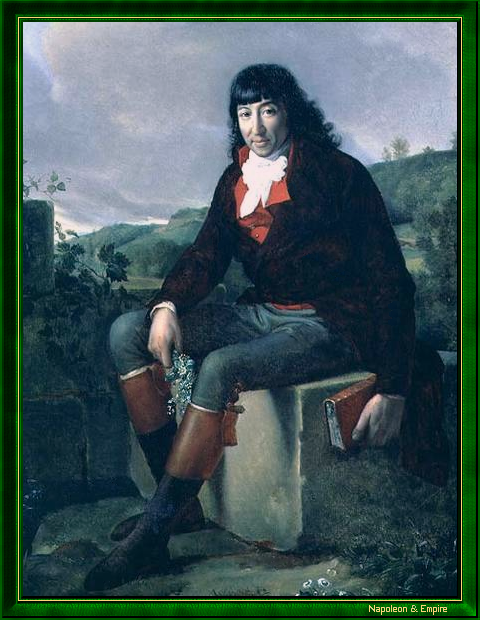Louis Marie de La Révellière-Lépeaux
Pronunciation:

Louis Marie de La Révellière-Lépeaux was born on August 24, 1753 in Montaigu, Poitou (now in the Vendée département).
A victim of violence at the hands of a priest preceptor, La Révellière-Lépeaux's hatred of Catholicism was matched only by his taste for strong civic morality and individual freedoms. Hence, among other things, his rejection at the time of the Revolution of the establishment of the Revolutionary Tribunal, and his desire to be able to express himself freely at the Convention.
Hiding from Maximilien Robespierre's settling of scores, he was not seen again until after Thermidor, when his authentic republicanism and sense of proportion led him triumphantly to one of the Directors' seats in the first Directoire, from July 29 to November 1, 1796, then from November 27, 1798 to February 25, 1799.
At the same time, still obsessed by his anti-clericalism, he encouraged the emergence of a new cult: theophilanthropy (this doctrine, which denies all forms of worship and ceremonial, spread from 1797 and was banned by Napoleon in 1801), of which he became the leader.
Refusing to swear an oath to Napoleon Bonaparte after the coup d'état of 18 Brumaire, he left political life, and despite police harassment was not exiled during the Restoration.
As persecution for his membership of the Théophilanthropes ceased, this sincere and honest patriot was left to live in peace, respected if not loved.
La Révellière-Lépeaux died on March 27, 1824. He was buried in the Père-Lachaise cemetery, 39th division .
"Louis Marie de La Révellière-Lépeaux" by François Pascal Simon Gérard (Rome 1770 - Paris 1837).

Napoleon I, who appreciated the man, still spoke of him on St. Helena.
Other portraits

"Louis Marie de La Révellière-Lépeaux". Drawing by H. Rousseau, engraved by E. Thomas.